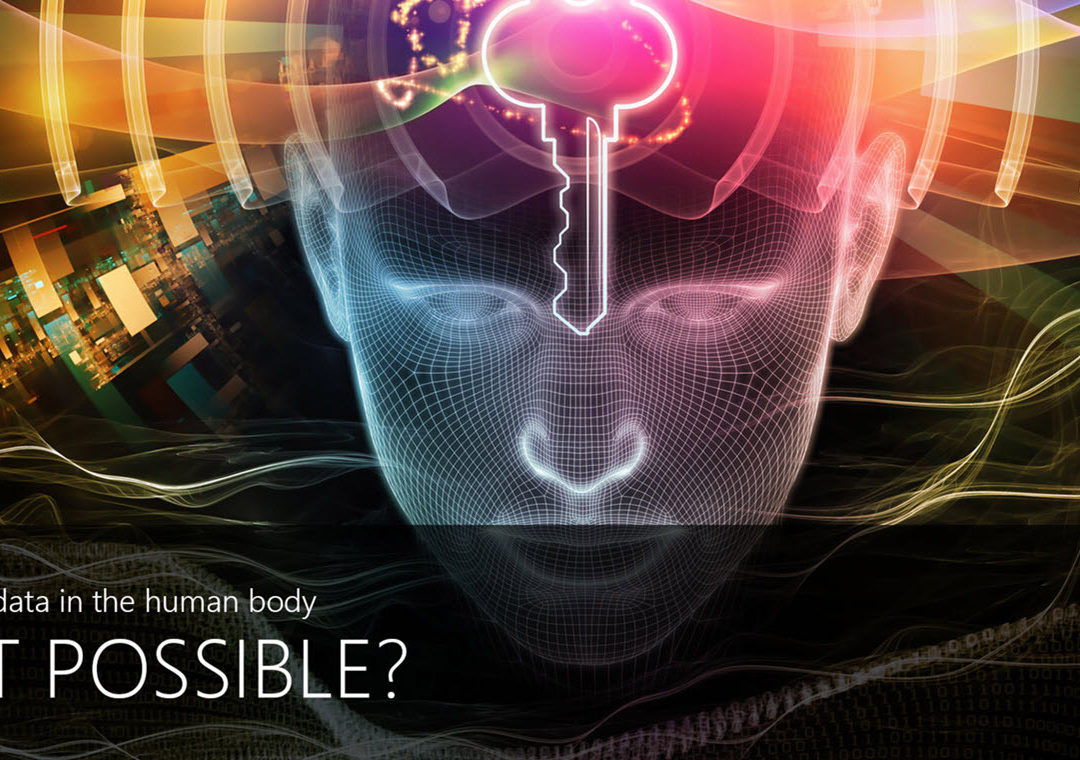Is It Possible To Store Data In The Human Body?
Storing data on the human body is a really interesting topic to us here at Royal Jay. Our experience with patient records drives us to find better solutions that can be implemented today, and in doing so thinking about what could be possible in the future.
In our recent research, we have found it is indeed possible to store data in the human body, and there are several smart and practical ways to do this already. Implants such as RFID devices have been implemented for a while now and are already making a positive impact on healthcare. Electronic skin patches are a recent innovation but are showing much promise.
Many exciting developments are taking place in the field of DNA, nano-organisms, and nanotechnology for data storage purposes. These methods are still in early stages of development but are bound to play an increasingly important role.
Let’s take a deeper look and uncover what the present and future hold in store for storing data in the human body.
A Few Notable Examples
Several case studies of DNA and applicable technologies give us a clear picture of what is possible.
A geneticist and bioengineer working at Harvard’s Wyss Institute achieved a major breakthrough during 2012. George Church and Sri Kosuri managed to encode a single gram of DNA with digital information consisting of 11 JPG images, a 53 400-word HTML book draft, and a JavaScript program making up 5.5 petabits of data. Although this data is held on synthetic DNA and not on the body, it gives us a sense of the ‘on body’ data storage possibilities in the future once these methods are refined.
Another viable method for storing patient’s health data is through tiny RFID (Radio-frequency identification) chips. These are barely larger than a grain of rice and can be, implanted in humans and animals. Originally used to track and trace various items for logistics purposes, they are, now implemented in the healthcare industry.
DNA: Junk And Core DNA
The original idea of storing and retrieving data from DNA molecules was envisioned by Mikhail Neiman and published in the Radiotekhnika journal, in the USSR from 1964-65. For a long time, the concept was simply not feasible and a concept reserved for imaginative science fiction novels and films.
Theoretically, understanding how data is stored in DNA is simple. Each strand of DNA has a 19-bit address block, while an entire vat of DNA is usually sequenced out of order, and then ordered into usable data by using these addresses. Due to recent advances in microfluidics, it has become possible to synthesize and sequence DNA effectively.
Junk DNA is a term broadly describing DNA sequences that are not applicable to physiology, development, or on any other known organism-level. In theory it would be possible to write and retrieve data from a person’s junk DNA with limited risk to their overall physiology.
Initially the research community dismissed noncoding DNA as useless junk due to its genome size variability, gene duplication, and mutational degeneration. However, greater interest in junk DNA is presenting further examples of its functionality in understanding disease and storing data.
Implants
One of the more practical methods of keeping track of patients and their health information is through implants such as the RFID chip. This device has a simple construction, which consists of an integrated circuit enclosed in a silicate glass case and implanted under the skin. Important information such as a patient’s contact details, identification, medical history, medications, and allergies can be stored and retrieved easily and instantaneously.
A key benefit of RFID devices is that patients take greater responsibility for their own health data. Furthermore, patients and physicians have conducted many important tests.
“As a physician and chief information officer, I felt qualified to evaluate the medical, legal, moral, and privacy aspects of the device. After using the device for three years, I am not an evangelist for implanted RFID, but I believe it can be valuable for some patients who understand the risks and benefits,” John Halamka shares his experience after implanting a VeriChip RFID device, in December of 2004.
Etching Data On The Human Eye
Various parts of the human body are capable of storing data, including the eye through holographic laser etching. Just mentioning this may scare off the squeamish, but the eye may prove a viable medium for storing data. Eyes are, used for biometric authentication and the next step could include encoding data on the lens itself. In a real world scenario, the patient will look into a reader, authenticate their identity, and then requested their permission to read or write data on their eye.
The plausibility of etching data on the eye is tentative, as data encoded on the lens should not obstruct vision. Moreover, it is challenging to overwrite or erase data more than once until this technology evolves further.
Electronic Skin Patches
Another innovative technology that should affect the healthcare industry in a positive manner is the electronic skin patch. Wearable devices such as electronic skin patches are stretchable and plastered on the skin, heart or brain. They are capable of helping doctors monitor and treat epilepsy, heart failure, and Parkinson’s disease.
An electronic skin patch co-developed by Dae-Hyeong Kim, the University of Texas, and MC10 utilizes drug-delivery, sensors, and memory components made from nanomaterials and a polymer substrate. The device is soft and feels similar to human skin.
However, the benefits of using such a device are numerous according to its creator:
“For more quantitative tracking of progression of symptoms and responses to medications, wearable healthcare devices that monitor important cues, store recorded data, and deliver feedback therapeutic agents via the human skin in a controlled way are highly required,” said Dae-Hyeong Kim, a chemical and biological engineering professor at Seoul National University.
Nano-organisms
The great strides and discoveries made in DNA research are, facilitating the advancement of live bacteria nano-organisms for data storage uses. Scientists from Harvard University have implemented a technique utilizing the CRISPR gene-editing tool allowing data to be, recorded permanently into living cells. Some advantages of using nano-organisms are higher fidelity data storage, detect and kill other microorganisms, and provide records of genetic expression about the patient.
An interesting aspect of writing data to the genome of bacteria cells is that the modified bacterium passes on this information – to the next generation. Without any doubt, the potential for nano-organism data storage is massive.
Nanotechnology
Nanotechnology is poised to be implemented in a variety of unique ways to turn us into super-humans, benefitting both us as patients and the biomedical industry as a whole. Aside from gene editing nano robots, there is a story here for synthetic nano-storage. Perhaps this is no different than the implant argument above, except now we are talking invisible atomic sized storage vs a grain of rice.
The Bottom Line
Data storage methods in the human body are plentiful and effective. The vast research conducted in regards to DNA is already yielding results. Implants such as RFID devices are a practical solution, while electronic skin patches are making inroads as promising monitoring and healing devices.
Eye etching is still in its infancy and could be used in future data storage applications. Likewise, Nano-organisms present plenty of potential as replicating data storage mediums and disease fighting agents. Finally, nanotechnology’s medical applications have yielded great results for drug delivery systems and imaging purposes.



